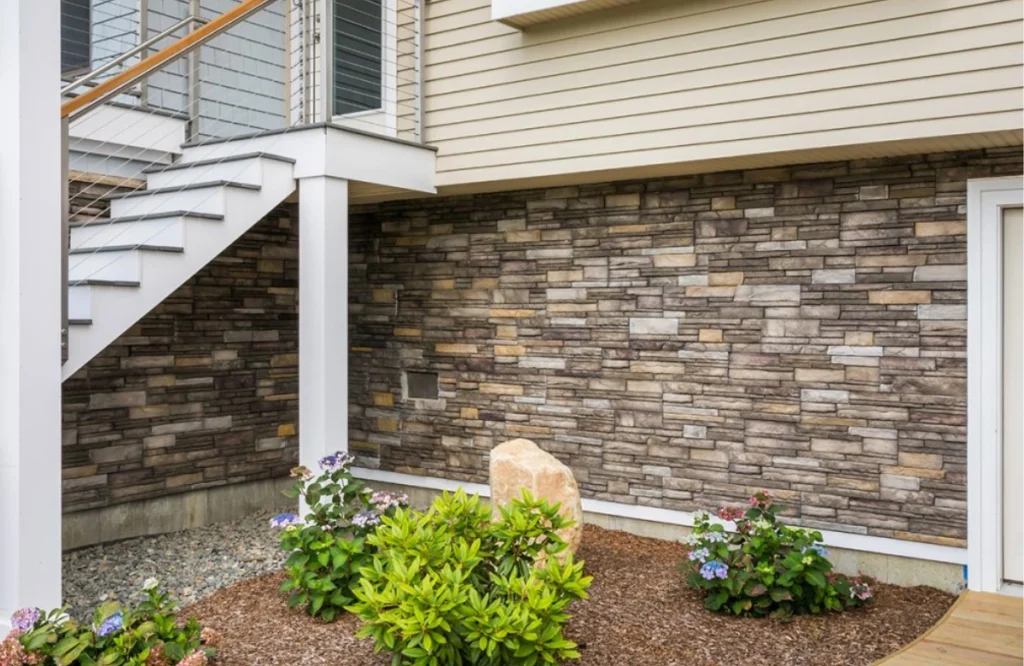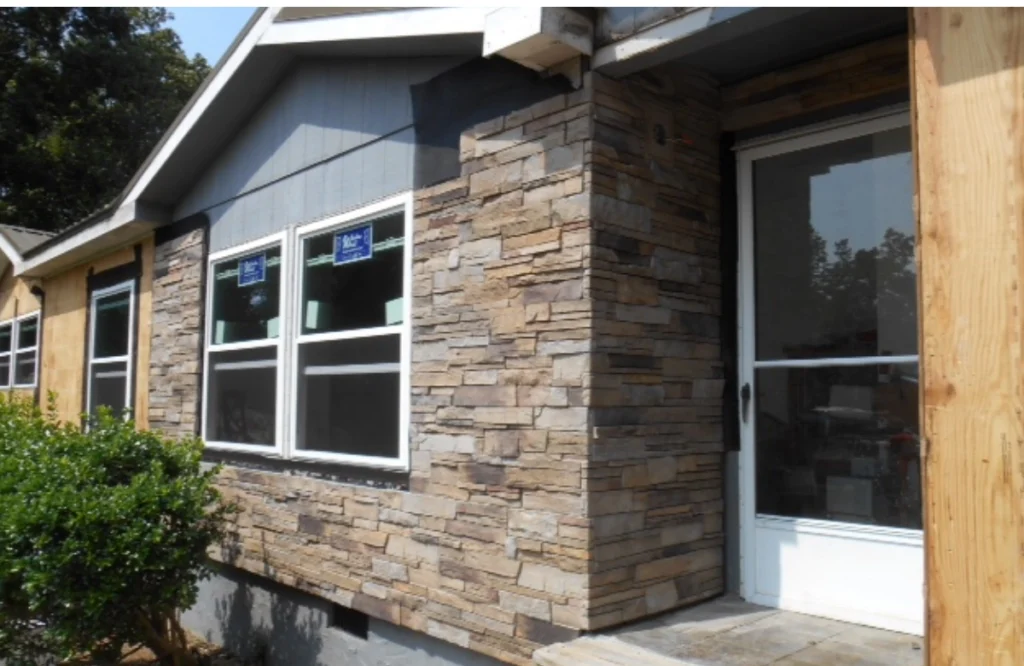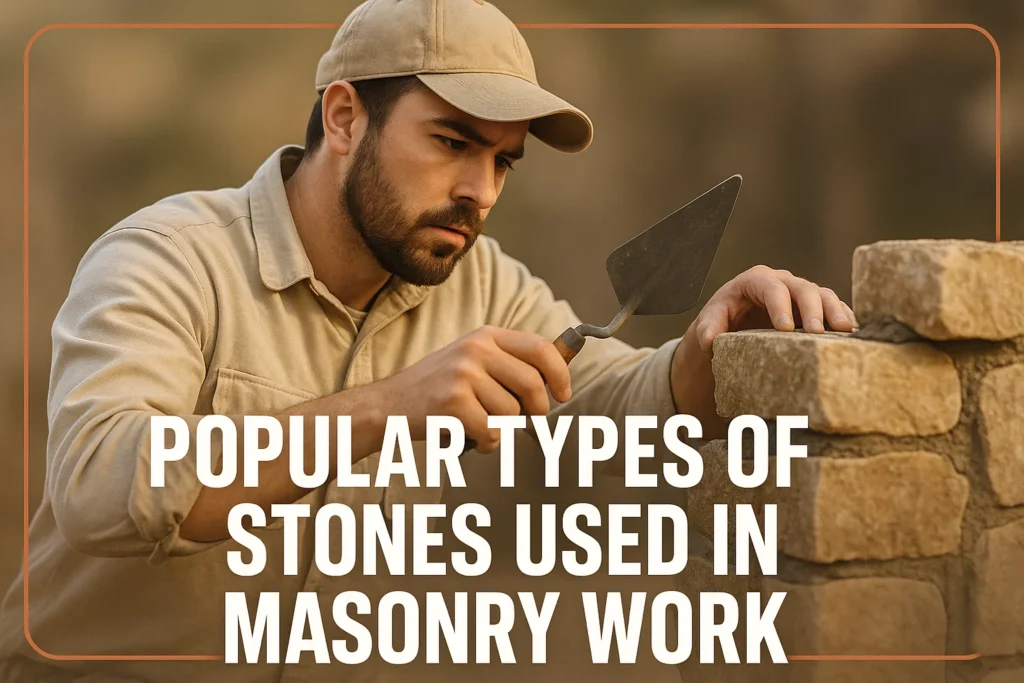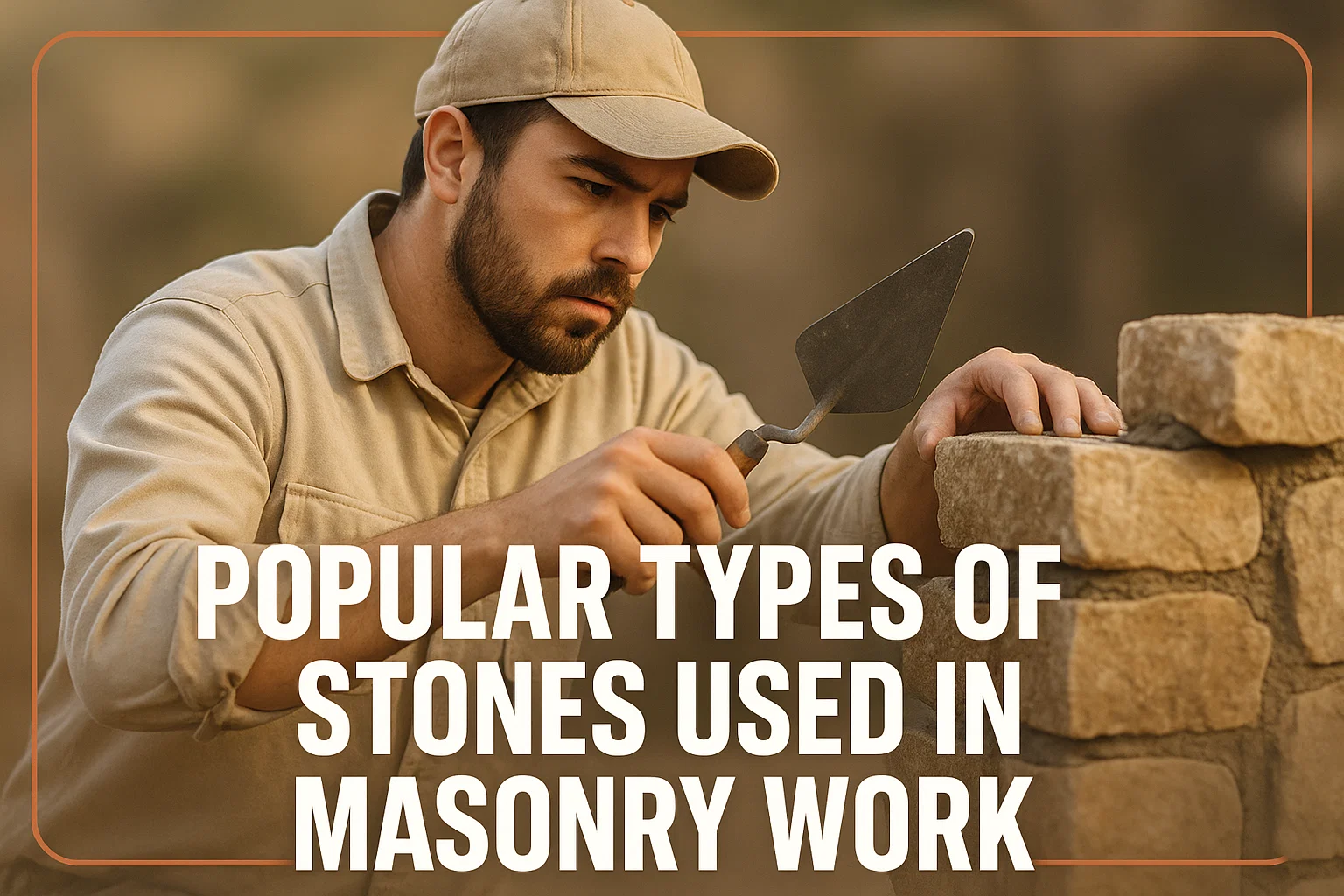Stone is one of the materials used in construction that can be trusted for years. Stone masonry has always been distinguished by its strength, beauty and eternal beauty, whether it is in old temple or castle or in the wilderness or the houses of the modern day world. Stone is the material of choice whether it is a retaining wall, a trendy patio or a decorative archway.
The masons and construction people today have a wide variety of types of stone masonry to select based on the budget, design, and application. Every stone has its own appearance and performance. However, in discussing the most common kinds of stones utilized in masonry work, it is valuable to prioritize the basics of stone masonry.
What is Stone Masonry?
Stone masonry is an art of cutting, and fitting together of stones using mortar to construct walls, floors, foundations and other constructions. It is among the oldest modes of construction in the world and it has not lost its popularity due to its durability and natural beauty.
Importance of Stone Masonry in Construction
- Stone is durable and has a lifespan of centuries, and thus it is one of the most reliable materials.
- It gives a natural thermal, acoustic and sound isolation.
- Both modern and traditional designs are enhanced with masonry stone, which makes them attractive.
- Stone is not a material that degrades easily with weather conditions unlike many artificial materials.
Overview of Different Types of Masonry
There are two main categories of masonry:
- Brick masonry – Building units are made out of bricks.
- Stone masonry – It utilizes natural stones that are granite, limestone or sandstone.
Within the stone masonry, there are a few types of stone masons such as rubble masonry, ashlar masonry and random rubble masonry. They are both different in their attributes to use in various projects.
Main Types of Stone Masonry
Rubble Masonry Explained
Rubble masonry is the masonry that utilizes irregularly shaped and stones of different size. Stones are left crude and uncut leaving walls rough in appearance. The use of this style is common in boundary walls, construction in rural and foundations.
What is Random Rubble Masonry?
Rubble masonry The most commonly used type of rubble is random rubble masonry. The stones are not pierced in a specific pattern and they are placed in irregular sizes resulting in what appears to be a natural look of the wall. There is an uneven arrangement but it can be made strong through proper filling with mortar. Usually, it is found in garden walls and in country houses because it is economical.

Coursed vs. Uncoursed Rubble Masonry
- Coursed rubble masonry – The stones are arranged in horizontal layers (courses), to make it more uniform.
- Uncoursed rubble masonry – The stones are stacked together randomly without any layers and provide a natural and rustic look.
Ashlar Masonry and Its Variations
Ashlar is masons that utilize finely dressed stones in the form of square or rectangles. The stones are well modeled, thus fitting easily with little mortar. This form of masonry appears exquisite and is mostly employed in monuments and high quality buildings. Variations include:
- Ashlar fine masonry – Stones with extremely smooth finishes.
- Ashlar rough masonry – The stones have a rough exterior that gives the appearance of rustic.
- Ashlar block in course – Bigger rectangle blocks that are placed in a regular pattern.
Popular Stones Used in Masonry Work
At this point, we should take a closer look at these types of stones employed in stone masonry and their preference.
Granite: Strength and Durability
Granite is considered to be one of the hardest and strongest natural stones. It is extremely strong and therefore convenient in load bearing walls, foundations and floors. It is withstandable to weather, water and even fire. Modern designs are also made beautiful through granite which is available in a variety of colors such as grey, pink, and black.
Limestone: Cost-Effective and Versatile
Limestone is a softer rock than granite and hence cut and shaped easily. It is common in random rubble masonry as well as ashlar masonry. Limestone walls are clean and the stone is comparatively cheap. It finds popularity in home construction, pavements and decorative facades.
Sandstone: Aesthetic and Workable
Sandstone is adored because of its warm colors- brown and yellow, and red. Carving is easy and it is perfect as an element of decoration such as arches, columns and cladding. Historically, Sandstone has been used in forts, temples and palaces. It is still applicable today in landscape as well as wall construction.
Marble: Luxury and Decorative Uses
The value of marble is on beauty and elegance. It has been applied to well-known monuments such as Taj Mahal. Although it is weaker than granite, it is easier to handle, as its polished surface is preferred by people in flooring, stair cases and ornamental walls. Due to the high cost of marble, it is commonly used in luxury building works.
Slate and Other Regional Stone Options
Slate is a fine-grained stone commonly utilized in roofing tiles, flooring and cladding the wall. It is easy to cut into fine sheets making it convenient and cheap. Depending on the availability, local stones such as basalt, trap rock, or quartzite are also used in most of the regions. These local stones are likely to make structures local in character.

Choosing the Right Stone Masonry Type
Factors Affecting Stone Selection
When deciding which stone to use, consider:
- Strength and durability needed.
- Appearance and design style.
- Availability in your region.
- Budget for the project.
Climate and Durability Considerations
- In damp areas, replace those stones with ones that are not water-absorbent such as granite or slate.
- Sandstone or limestone would work well in hot areas due to the natural cooling effects.
- In cold climates use compact rocks which do not fracture easily.
Cost Differences Among Stone Masonry Types
- Random rubble masonry – Least expensive.
- Coursed rubble masonry – Moderate cost.
- Ashlar masonry – Is the most expensive because of labor and the cutting accuracy.
Stone Masonry in Modern Construction
Traditional vs. Contemporary Applications
The castles, temples and fortifications were being built with traditional stone masonry. Modern buildings, commercial buildings, landscaping and decorative features are being done using stone today. Stone can withstand the test of time because of the combination of the old-world and modern design.
Sustainability and Eco-Friendly Stone Masonry
Natural stone is environmental friendly because it does not require intensive processing as in the case of concrete or steel. Stone is also locally sourced, which has reduced transportation and environmental cost.
Future Trends in Stone Masonry Work
- Lightweight construction by stone veneer.
- Use of stone, glass, steel and wood to do modern looks.
- Increased amount of sustainable, low-maintenance materials demanded.
Conclusion
Stone masonry remains as one of the sure and attractive forms of construction in the world. Between the rustic beauty of unchosen rubble masonry and the polish of ashlar masonry the possibilities are limitless. Common stones such as granite, limestone, sandstone, marble, and slate all have their own advantages and beauty and as such, stone is well suited to both traditional and modern projects.
The selection of the correct kinds of stone masonry relies on your budget, weather, and the purpose of design. You want to be durable, elegant, or cost-effective with a type of stone to fit your requirements.
Looking for expert help with stone masonry for your next project? Visit Maura Mason Corporation today. Our team specializes in all stone masonry types, offering professional craftsmanship that blends strength with style. Discover the perfect stone solution for your home or business, explore more with Maura Mason Corporation today!
FAQs
What is the strongest masonry of stone?
The most durable and the strongest form of stone masonry is the ashlar masonry, particularly granite.
Is it cheaper than ashlar masonry to use random rubble masonry?
Yes, random rubble masonry is a lot economical since it utilizes irregular stones and it needs less shaping.
Which are the most common stones that are used in the construction of houses?
The most common stones used in residential buildings are granite, limestone and sandstone.
Is it possible to have the exterior walls in marble?
Outdoor use of marble needs to be sealed and maintained so as to avoid damage caused by weather.
But is stone masonry superior to brick masonry?
Stone masonry is stronger and more attractive though it is still costly than brick masonry.
What is the life span of stone masonry wall?
Stone masonry walls are able to last several centuries with proper care.





